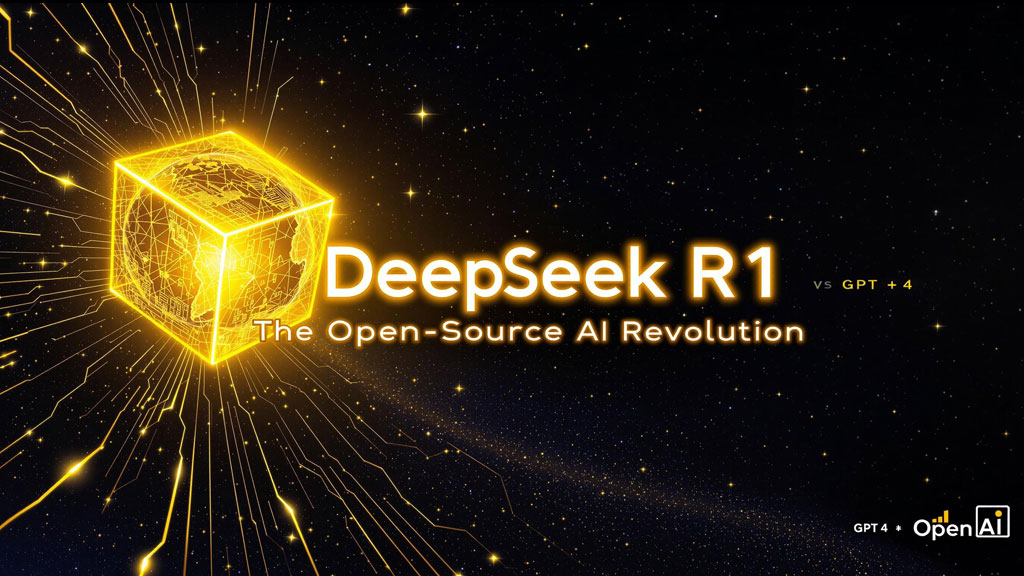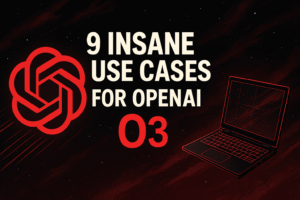The AI industry is no stranger to groundbreaking advancements, but every so often, a release comes along that truly redefines the landscape. Enter DeepSeek R1, the open-source AI model that has not only matched but in some cases surpassed the performance of OpenAI’s GPT-4. What makes this release even more remarkable is its accessibility—DeepSeek R1 is available to everyone, for free.
This isn’t just another incremental update; it’s a seismic shift in how we perceive AI development. With its system 2 thinking capabilities, DeepSeek R1 demonstrates advanced reasoning and problem-solving skills that rival the best in the industry. But what exactly makes this model so special, and why is it causing such a stir?
In this blog post, we’ll dive deep into the features, benchmarks, and implications of DeepSeek R1. We’ll also explore how this model could reshape the AI industry, offering developers and businesses a cost-effective alternative to expensive proprietary systems. Whether you’re an AI enthusiast, a developer, or simply curious about the future of technology, this is a story you won’t want to miss.
For more insights into the latest AI innovations, check out our articles on OpenAI Orion and Microsoft Co-Pilot Studio.
What Makes DeepSeek R1 Stand Out?
1. Open-Source Accessibility
One of the most striking features of DeepSeek R1 is its open-source nature. Unlike proprietary models like OpenAI’s GPT-4, which require costly subscriptions, DeepSeek R1 is freely available to the public. This democratization of AI technology opens up endless possibilities for developers, researchers, and businesses looking to leverage cutting-edge AI without breaking the bank.
For a deeper dive into how open-source AI is transforming industries, explore our article on Bolt New Fork.
2. System 2 Thinking
DeepSeek R1 is built around system 2 thinking, a concept that allows the model to engage in longer, more complex reasoning processes. This capability enables the AI to tackle intricate problems with greater accuracy and efficiency.
In benchmarks, DeepSeek R1 has demonstrated performance on par with OpenAI’s GPT-4, even surpassing it in certain tasks. This is particularly impressive given the model’s open-source nature and the fact that it’s available for free.
3. Model Distillation
Another groundbreaking aspect of DeepSeek R1 is its use of model distillation. This process involves transferring the knowledge of a larger, more complex model into a smaller, more efficient one. The result is a model that retains the intelligence of its larger counterpart while being significantly more cost-effective to run.
For example, DeepSeek R1’s distilled versions—such as the 70B and 32B models—have shown remarkable performance, often outperforming larger models like GPT-4 in specific use cases. This innovation could revolutionize how we deploy AI in resource-constrained environments.
DeepSeek R1 vs. OpenAI: A Head-to-Head Comparison
When it comes to AI benchmarks, DeepSeek R1 has proven itself to be a formidable competitor to OpenAI’s GPT-4. In tests ranging from mathematical reasoning to creative writing, DeepSeek R1 has consistently delivered results that are on par with or even superior to those of GPT-4.
One of the most surprising aspects of DeepSeek R1’s performance is its ability to self-evolve. As the model spends more time thinking about a problem, it develops sophisticated behaviors like reflection and exploration. These emergent capabilities allow the model to solve problems in ways that were never explicitly programmed, showcasing the true potential of reinforcement learning.
For a closer look at how AI models are evolving, check out our article on Inflection AI’s Billion-Dollar Fundraising.
The Future of AI: What DeepSeek R1 Means for the Industry
DeepSeek R1 isn’t just a technological marvel; it’s a harbinger of things to come. As AI models become more advanced and accessible, we can expect to see a surge in innovation across industries. From healthcare to finance, the applications of AI are virtually limitless.
Moreover, the success of DeepSeek R1 highlights the importance of open-source development in driving progress. By making cutting-edge technology available to everyone, we can accelerate the pace of innovation and ensure that the benefits of AI are shared more equitably.
For more insights into the future of AI, explore our articles on Anthropic’s Claude AI and NotebookLM.
Conclusion
DeepSeek R1 is more than just an AI model; it’s a testament to the power of open-source innovation. By challenging the dominance of proprietary systems like OpenAI’s GPT-4, DeepSeek R1 has opened up new possibilities for developers, researchers, and businesses alike.
As we look to the future, it’s clear that the AI industry is on the brink of a new era. With models like DeepSeek R1 leading the charge, we can expect to see even more groundbreaking advancements in the years to come.
If you’re excited about the potential of AI, don’t miss our articles on AI for Marketing and Influencer Marketing.
What are your thoughts on DeepSeek R1 and its potential to disrupt the AI industry? Share your opinions in the comments below, and don’t forget to subscribe for more updates on the latest in AI and technology!







